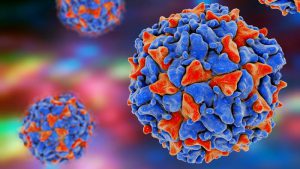Libertana ECM POC – Common Overview Guide
📘 What Is This POC About?
This Proof-of-Concept (POC) is a limited-time sandbox simulation of how Libertana staff can manage the Enhanced Care Management (ECM) member journey using Aztute’s platform.
This POC demonstrates:
- How different roles interact with the system
- What steps occur in the ECM member lifecycle
- How role-based access reduces confusion and guides users to only what they need
- What functions are available in the platform and how to access them
This guide should be reviewed first before accessing your role-specific user guide.
👥 Key Roles in the ECM POC
| Role |
Definition |
| DEO / Intake Coordinator |
Responsible for entering new members into the system via forms (MIF) or bulk upload from MCPs |
| Supervising Case Manager (SCM) |
Oversees assignments to Case Managers, reviews care progress, reassigns or inactivates members |
| Case Manager (CM) |
Provides direct care tasks including outreach, enrollment, assessments, and care plan documentation |
| Admin (Claims/Content)
(Later when there is data) |
Manages system-level updates, claim reviews, and data or template corrections |
You will be granted access to only the tools relevant to your role, reducing errors and making onboarding easier.
ACCESS AZTUTE SYSTEM
🔐 Accessing Aztute – App & Command Center
This standalone guide explains how to access both components of the Aztute platform:
1. The App – where Case Managers and Supervisors manage care workflows
2. The Command Center (Browser App) – where administrative and program management tasks are performed
🚀 Getting Started
Before using Aztute, make sure you have:
- Your assigned Username and Password
- A device with Chrome, Edge, or a mobile browser
- Access to either your work email or phone for two-factor authentication (2FA)
🔐 2FA Note: In most cases, your 2FA is set up using your work email. However, your system administrator may have configured it to use your mobile phone instead—or both. Follow the login prompts accordingly.
📱 Accessing the App (Mobile)
The Aztute App is the care-facing interface used by Case Managers (CMs) and Supervising Case Managers (SCMs) to:
- Communicate with your members and teams
To access the app:
1. Open your mobile browser or download the Aztute Public Health App from the App Store or Google Play
2. Launch the app
3. Enter your Username and Password
4. Complete Two-Factor Authentication (2FA) if prompted
> No need to select an organization – this step is preconfigured for Libertana users.
Click the link for Preview – Download the app
🖥️ Accessing the Command Center (Web)
The Command Center is used by:
- DEOs / Intake Coordinators to perform member intake (manual or bulk)
- SCMs to assign Case Managers and monitor dashboards
- CMs to do Outreach, HRAs, Care Plans, Progress Notes (Encounters)
- Admins to manage claims, content, and configurations
To access the Command Center:
1. Open a desktop browser (Chrome or Edge recommended)
2. Visit: https://app.aztute.com
3. Click the Switch icon in the top right
4. Type Libertana in the field and click Save
5. Enter your Username and Password
6. Complete 2FA as configured
> You are only given access to tools that apply to your role. This reduces confusion and ensures you stay within your lane.
If you are unsure which environment to use, refer to your Role-Based User Guide.
For technical support, contact: support@aztute.com
🧭 Member Journey Overview – Routine Tasks
| Step |
Action Owner |
System Behavior / Trigger |
| Member Intake (MIF/File) |
DEO |
Member added to system |
| Assignment |
SCM |
CM notified, member status updated |
| Outreach + Enrollment |
CM |
Outreach triggers claim; enrollment triggers HRA |
| HRA |
CM |
Set to “In Progress” triggers Care Plan |
| Care Plan |
CM |
Submitted plan is visible to SCM |
| Progress Notes |
CM |
First monthly note triggers PMPM claim |
| Monitoring |
SCM |
Uses 360 View, Program Dashboards, CM Productivity |
🔁 Ad Hoc / As-Needed Tasks
| Task |
Action Owner |
Notes |
| Intake Edits / Fixes |
DEO |
Reopen and modify MIF entries if flagged |
| Reassign Case Manager |
SCM |
From All Member Status, reassign member to new CM |
| Mark Member Inactive |
SCM |
From All Member Status |
| Flag/Correct Data Issues |
All roles → Admin |
Admin handles all member-level data corrections |
| Update Content / Templates |
Admin |
Referral lists, dropdowns, and standardized form inputs |
| Claim Investigation |
Admin |
Review status, investigate missed or incorrect claims |
🔄 Key Rules & Interdependencies
| Action |
Required Precondition |
| Outreach |
Member assigned to CM by SCM |
| HRA |
Outreach marked as Successful |
| Care Plan |
HRA set to “In Progress” |
| Progress Notes |
Requires a Care Plan to begin |
| Claim Generation |
Triggered by Outreach + Progress Notes monthly |
❓ Frequently Asked Questions
Q: Can I edit member demographic data?
Only Admins can make those changes. Others must flag issues via Support.
Q: Who can assign or reassign Case Managers?
Only SCMs through the Command Center.
Q: Can we do multiple HRAs or Care Plans?
Only one of each per member during the POC. Ongoing care is documented via Progress Notes.
📌 Role-Based Quick Summary
👩⚕️ Case Manager (CM)
- Views assigned member via My Tasks
- Completes Outreach + Enrollment
- Completes HRA → sets status to In Progress
- Logs ongoing Progress Notes
- Monitors care via Member 360
👩💼 Supervising Case Manager (SCM)
- Assigns & reassigns members via Command Center
- Receives enrollment/decline notifications
- Marks members Inactive if needed
- Uses 360 View, Program Dashboards, CM Productivity Dashboard to monitor care delivery
👩💻 DEO / Intake Coordinator
- Creates member records using MIF or file upload from MCPs.
- Ensures correct program, demographic, and contact info are entered
🛠️ Admin (Billing / Content)
- Manages claim oversight and confirms generation from outreach + progress notes
- Handles content updates, user roles, and demographic corrections
📊 Libertana ECM Member Journey
| Routine Lifecycle Step |
DEO / Intake Coordinator |
Supervising Case Manager (SCM) |
Case Manager (CM) |
Admin (Claims & Content) |
| 1. Intake Initiation |
Intake member via MIF or MCP file |
|
|
|
| 2. Member Assignment |
|
Assign member to CM via Intake Sheet → Member Status tab |
Receives Notification that a new member is assigned. |
|
| 3. Outreach & Enrollment |
|
Receives notification when enrolled/declined |
Performs outreach → marks outcome + enrollment |
Claim generated on successful outreach |
| 4. HRA Creation & Completion |
|
|
Completes HRA (created automatically)→ sets status = In Progress |
|
| 5. Care Plan Development |
|
|
Completes Care Plan (created automatically) form (goals, interventions) |
|
| 6. Progress Notes |
|
|
Logs notes → first monthly note triggers PMPM claim |
Reviews claim via dashboard |
| 7. Monitoring |
|
Uses 360 View, Program Management & Productivity dashboards |
Uses 360 View to check member status |
|
🔁 Ad Hoc / As-Needed Activities
| Ad Hoc Task |
DEO / Intake Coordinator |
Supervising Case Manager (SCM) |
Case Manager (CM) |
Admin (Claims & Content) |
| Edit Existing Intake |
Update/correct member record if flagged |
|
|
|
| Reassign Case Manager |
|
Reassign member via All Member Status |
|
|
| Mark Member Inactive |
|
Mark inactive from All Member Status |
|
|
| Flag Data Issues |
Report duplicates or errors to Admin |
Flag data gaps to Admin |
Make corrections to member demographics |
|
| Content / Template Updates |
|
|
|
Update, forms, Notification, Content |
| Claim Audit |
|
|
|
View Claims Data |
| Communications
With the Libertana via Chat |
X |
X |
X |
X |
| Create Support Ticket |
X |
X |
X |
X |
Now that you understand the end-to-end process and where your role fits in:
- Login to the Command or App.
- Documentation is already available inside the solution.
- Open your Role-Based User Guide for step-by-step instructions
- Join the Day 1 Kickoff Session to get your login, ask questions, and test access
- Use your sandbox access to perform real workflow tasks with test members
- Support Tickets can be created with the system
Welcome to the ECM POC — your role is critical to its success!
____________________________________________________














 DCHS.GOV
DCHS.GOV





